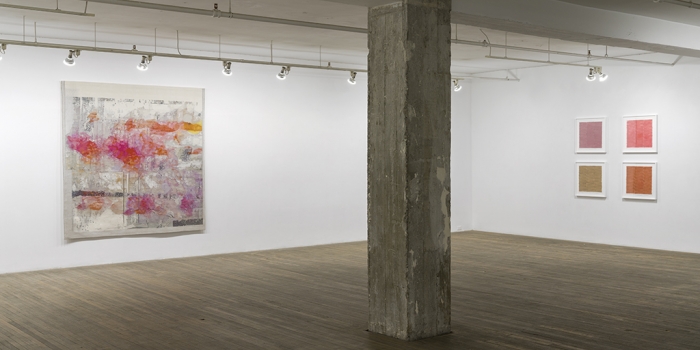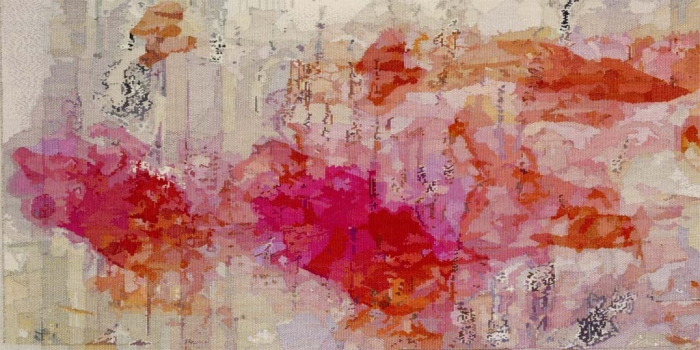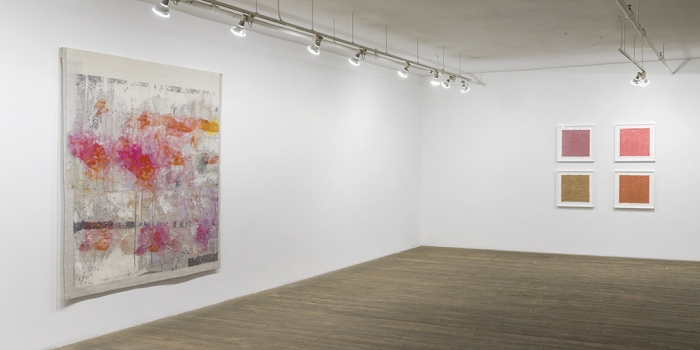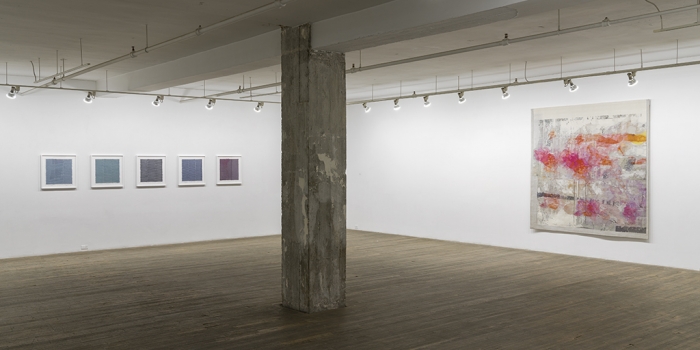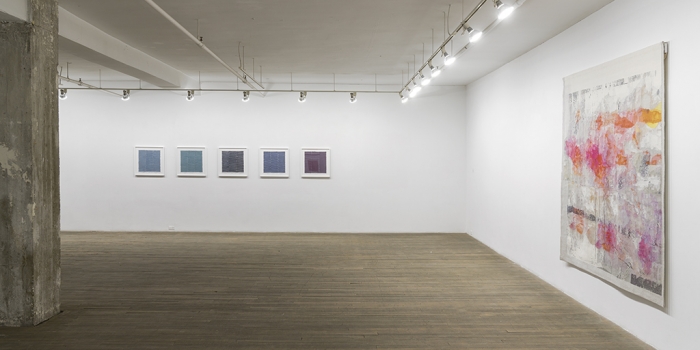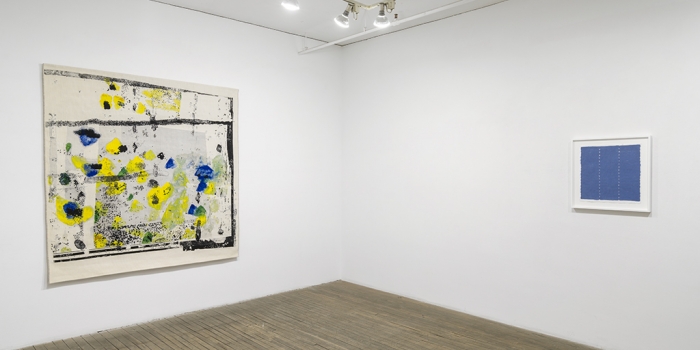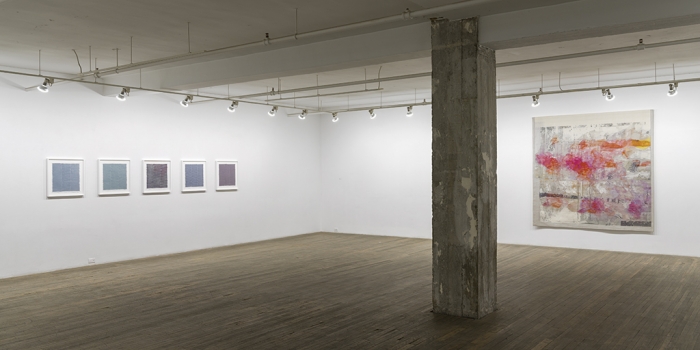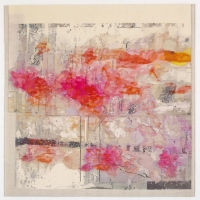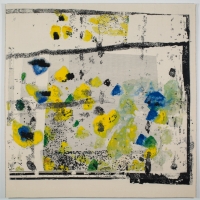From the original photographic image, the tapestry only retains fragments, which are flagrantly pixelated, seeming to be sedimented beneath a huge coloured wave, which has submerged space and compressed the pigments into brilliant marks with misty outlines. Referring to the cartoon created by an intuitive approach, the artist performs the act of making the tapestry through a slow dialogue, which aims to translate through an opaque, uncontrived material, this illusion of coloured presence, of transparency and of movement. It’s within the time-lapse of a meticulously controlled interpretation that he reaches the aesthetic intensity of the work. Each combination of wool constitutes a shade to be amassed within the weft according to a strict method for the passage from one colour field to the other. The woven image exposes a close-up view of the contours of the juxtaposed cut forms unique to tapestry, but seen at a distance, it appears in all its singularity revealing its atmospheric nature and intensifying the fluidity of the artwork. This approach to the abstract nature of the visual language of the cartoon, holds within it, however, a perceptual ambiguity, enabling the gaze to simultaneously capture within the finished work certain natural phenomena that can poeticize emotions rooted within individual memory. The works on paper, as opposed to the tapestry, are simply gestural explorations of the picture surface. The inherent character of the forms defined by the brushed lines manifest an aesthetic of immediacy and of variety within repetition.

